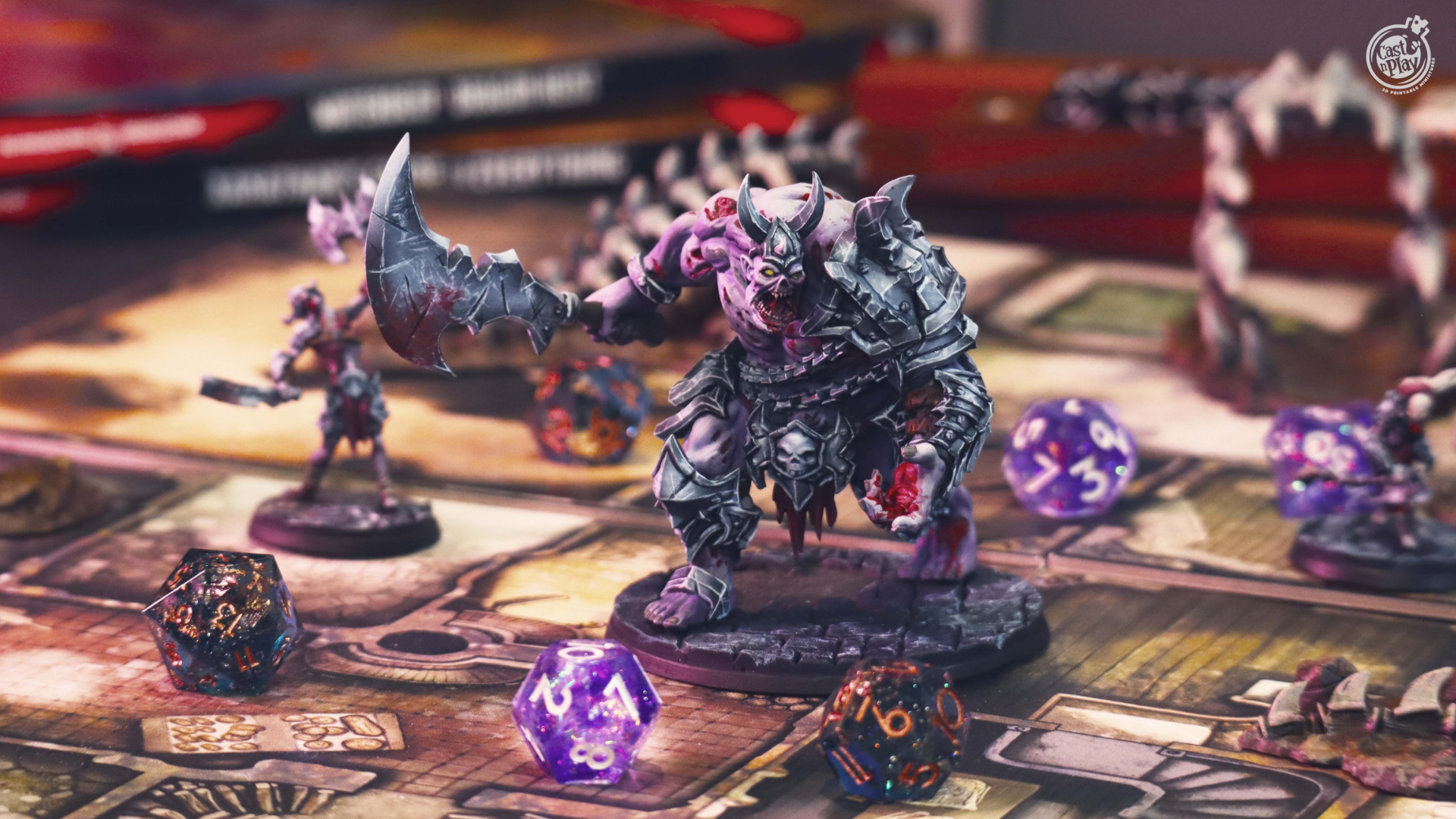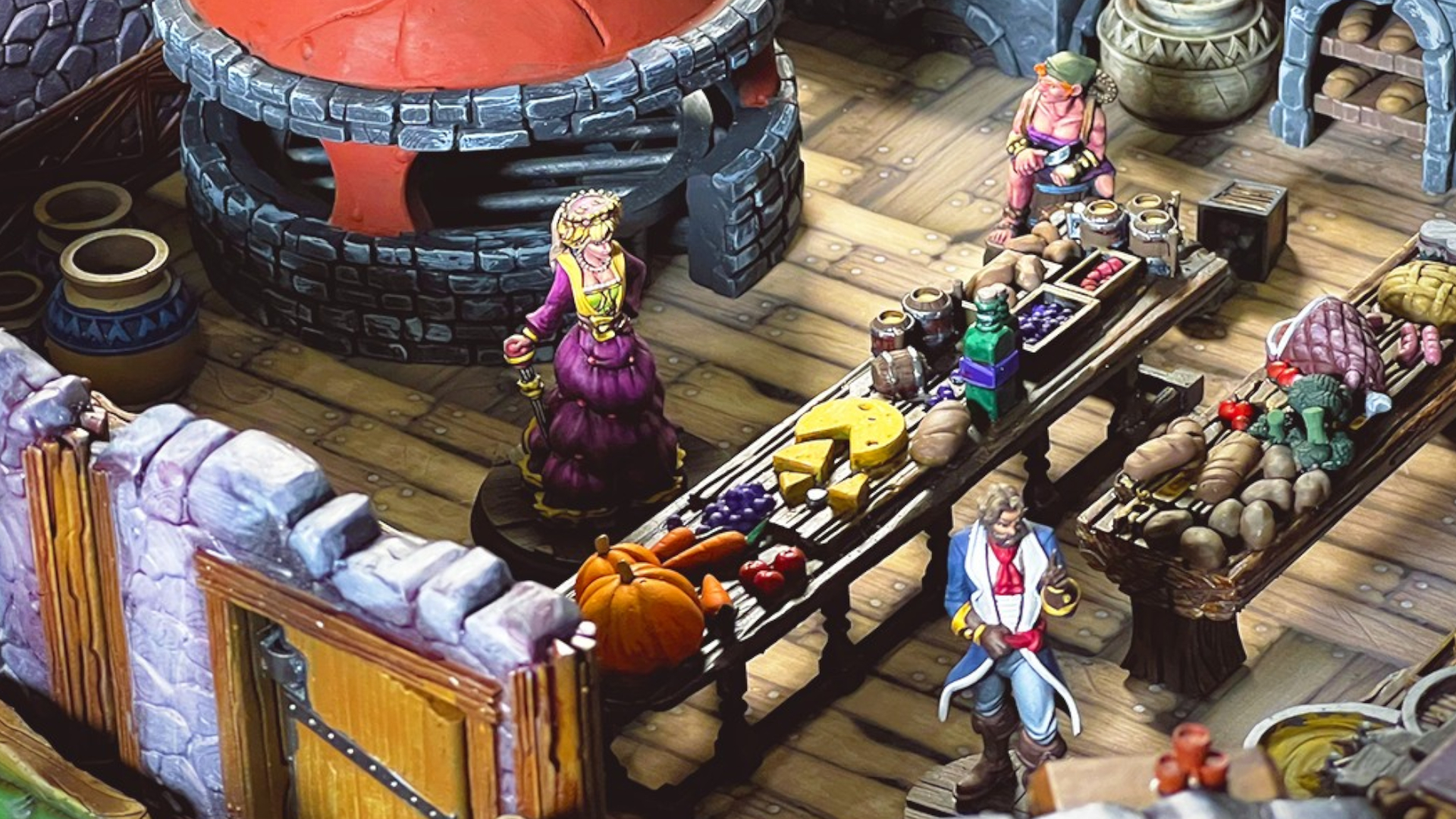Do-it-yourself D&D - how one team made a universe you can 3D print at home
Meet Cast n Play, the team that makes entire D&D worlds each month

Resin 3D printing is a bit like magic. You send a design to the machine, watch the build platform descend into a pool of goop, and then, hours later, a model appears seemingly from nowhere. Even after countless prints, the giddy excitement of that reveal doesn't wear off. It's what I always dreamed of as a young kid: the ability to print out literal toys.
Except, these days, the D&D community has taken that dream further: rather than leaving it at individual miniatures, they create entire worlds for us. Cast n Play is one of the groups leading that charge, and it's gone from a single person dabbling with the best 3D printers to a company building whole universes of content.
DIY realities

However, it wasn't plain sailing at the start. Alex Zaragoza's first 3D printer arrived broken. As a second-hand machine he bought on eBay back in 2015, it was, in his own words, "very bad" - the pieces didn't fit together properly and he had to glue them down. But even so, he was blown away by what it could do. Although it gave up the ghost less than a year later, Alex (then a 3D artist in the video game industry) had been bitten by the bug. So when a friend offered him a resin printer that they didn't have space for anymore, he jumped at the opportunity. Fast-forward a few years and Alex is now in charge of well over a dozen staff and a company that pulls in monthly subscribers for roughly 40 fantasy miniatures every four weeks. They're also finishing up their latest - and, judging by the $156,000+ raised so far, successful - crowdfunding campaign 'Terrain Essentials Vol II: Interiors' with numerous props for your game table.
There are clearly people looking for something like this because I don't know how else they would find this store which I made last night
Alex Zaragoza, co-founder & director
It wasn't the possibility of designing grand setups that set him on the path to Cast n Play, though - it was cost and practicality.
"We were getting into Warhammer for the first time," Alex tells me when we catch up on a video call. "And I'm like, 'this is too expensive. I'm sure we can print things [instead]. If you don't care, I don't care. Even if they look crappy, we can play. And if we like the game, then we can purchase things'. So we started downloading things off Thingiverse [a community 3D design website]. And it was kind of hard to get things. For example, for D&D, I would make lists of all the minis that I would need to run the whole book, and I'm looking on the Internet like, 'I'm gonna need three goblins, a dragon, four spiders', whatever. And it was so hard to get them."
Naturally, there was only one solution for a professional 3D artist like Alex: he'd have to make these miniatures himself.

Even though he only intended to sculpt "a crappy goblin" just so he could start using it in his home games, he began to wonder if anyone was selling models like this for other players in a similar position. So he opened a lowkey Shopify store to test the waters.
Weekly digests, tales from the communities you love, and more
"It started selling even without any ads or anything," Alex explains. "I just uploaded a couple models, and every now and then we had a couple dollars' sale, then $10, then another dollar here and there. And I'm like, wow, people are finding these even though I'm not promoting it. So there's clearly people looking for something like this because I don't know how else they would find this store which I made last night."
From there, things snowballed fast.
Full-time dreamer

Around that time, model subscriptions via Patreon had started to gain traction. So, as you've probably guessed, Alex decided to create his own in a 'what's the worst that can happen?' bout of spontaneity. And while that may not come as a surprise, what happened next might.
"We opened a Patreon and were still uploading things, making sure the text was looking fine. And before we even shared it with my parents and friends, a couple of people subscribed. I mean, it was [only] $1. But they just jumped in without even having images. It just said like 'Cast n Play 3d printable miniatures', and maybe a crappy description. And that was it. People were willing to pay a dollar just to see if there were better models there."
A domino effect followed. Alex made more models, and these won Cast n Play more subscribers. He then hired another sculptor and concept artists for additional miniatures, which encouraged more subscribers to sign up, and - well, this escalation continued for four years until the team hit its current total of 31. Nowadays, the group produces a couple of crowdfunding projects per year, a model-agnostic wargame, and full adventures that are compatible with the best Dungeons and Dragons books to go with their original Patreon campaign.
We want something that you can print at home, and that feels like it's a quality, official product
Alex Zaragoza, co-founder & director
It's a good example of the appetite people have for this idea. In a time where costs keep going up, value propositions like the one offered by Cast n Play are more than a little appealing. To start with, paying roughly $9 per month to get 40 or so detailed models that can be used in most of the best tabletop RPGs - even if you have to print them yourself - is a hell of a lot better than the $30 to $50 you'd have to spend on pre-built miniatures from normal brick-and-mortar stores. It winds up at a few cents per model, which is pretty absurd when you consider that you'd be lucky to get more than five minis for your $9 if you went the old-fashioned route of blister packs or box sets.
However, gamers aren't as stuck for choice as they were when Alex first began his journey. Loot Studios, Broken Anvil, and countless more now provide massive packs of models each month. So what makes Cast n Play stand out in a now much more crowded environment? For Alex, it still comes down to ease; rather than having to pay for models, dungeon tiles, and scenery separately, you're getting everything you need to play a session in one single pack.
And there's a lot more to come, too.
"We're trying to jump into the board game space," Alex reveals. "We're trying to design something that's specifically designed and well-thought-out for 3D printing. We don't want to go physical, we want something that you can print at home, and that feels like it's a quality, official product."

With 3D printers now becoming more affordable than ever (in contrast to the late 2010s when they cost thousands of dollars, you can now get a respectable resin 3D printer for around $200), Alex thinks this sort of experimental approach is the future. Actually, he likens it to the situation YouTube was in a decade or so ago.
"The fact that people [could] do videos and publish them on their own, with very little equipment, is kind of where I think we're at right now with 3D printing," he says. "Now we have YouTube channels that are amazing quality. And I think we're gonna get there eventually with 3D printing as well, where small teams can get very high-quality products out."
Basically? Watch this space - 3D printing is only going to become more impressive as time goes by. Considering where it is at the moment, that's more than a little exciting.
You can sign up to Cast n Play's monthly subscription here, and free sample minis are available via the Cast n Play Gumroad page. As for more tabletop shenanigans, don't forget to check out our guide to must-have board games, the top board games for adults, and these essential board games for 2 players.

I've been writing about games in one form or another since 2012, and now manage GamesRadar+'s tabletop gaming and toy coverage. You'll find my grubby paws on everything from board game reviews to the latest Lego news.


